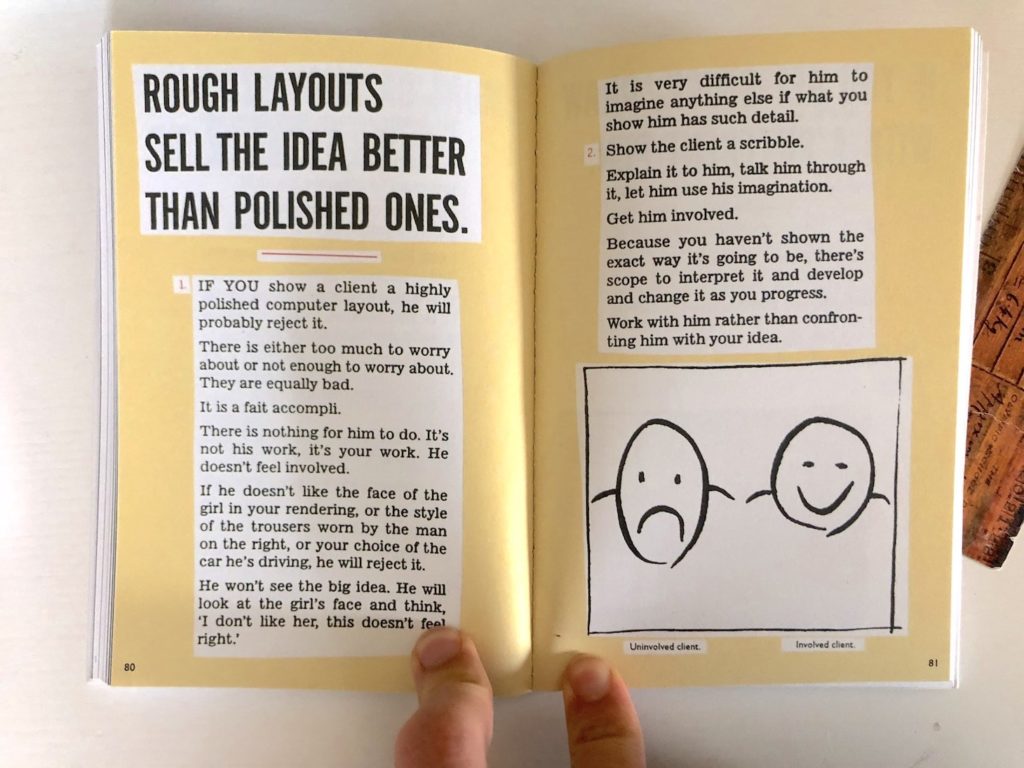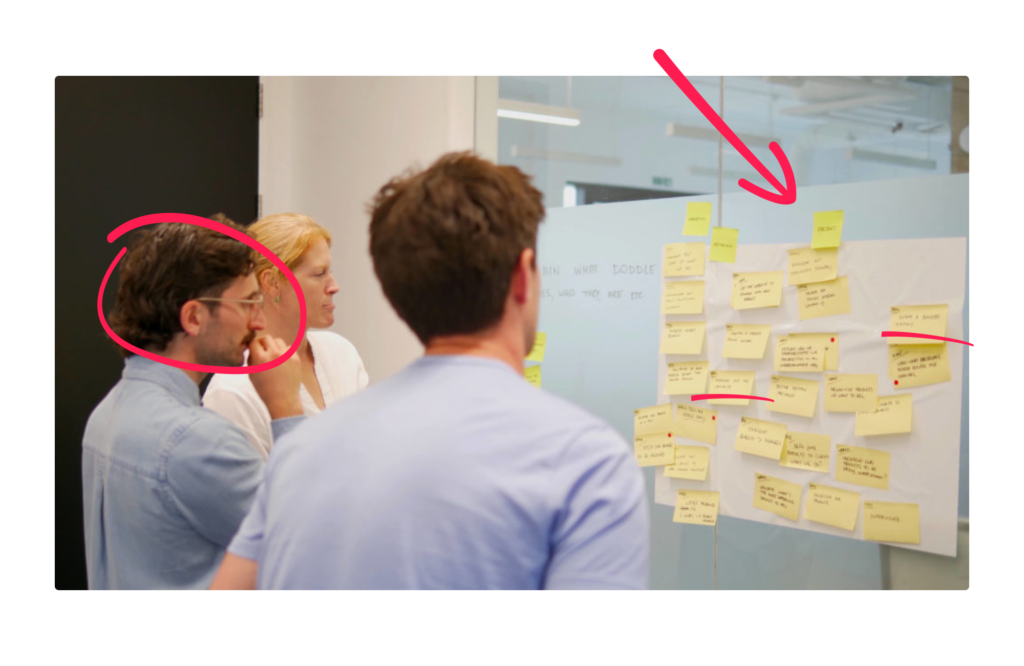Why building websites isn’t fun
If you’ve never had an awful experience with building a website, cast the first stone. Projects are often a drag, they become a tug of war and everyone heaves a sigh of relief when they are done. This is probably the shortest and most accurate description of the traditional “waterfall” approach for web design. Written by Dawid ZimnyWe’ve all worked in such environments. We’ve hated it as much as you did. And we don’t believe it has to be this way.
In pursuit of a better experience for everyone involved, we’ve stumbled upon a concept that revolutionised our process – the design sprint. But before we explain what it is, let’s investigate why the traditional approach gave us all sleepless nights.
Why the waterfall approach doesn’t work for websites
The process isn’t built for communication
You’ve given your requirements and provided the agency with content, they did their research, and the next time you talk to each other is probably in a few weeks to revise the first designs.
Contrary to what you might think, it’s not the agency’s fault. The process is simply not built for frequent updates. Agreeing to more frequent meetings and updates seems like a no-brainer, but it doesn’t work.
Not because developers and designers can’t communicate, nor because of a lack of focus or organisation.
There’s nothing to discuss you until a stage is completed, and revising scraps of designs ends up being much worse than the wait. Trust us, we’ve been there.
The process is at fault.
You’re not involved as a client
When you follow the waterfall approach, your involvement is limited to the research and a review after each phase. Then the iteration of that phase. And the iteration of the iteration.
We don’t doubt that your web agency can produce amazing wireframes. But if you’re not involved, you will not understand the reasoning behind some choices. This often causes clients to discard perfectly valid designs.

And it works the other way around. The best designers won’t be able to create a good product if they do not align their vision with yours. They need you in the process – but waterfall can’t accommodate that without compromises.
A lack of communication causes a tug of war
It’s finally the day when you see a working piece of software. A perfect reason to celebrate, don’t you think? Unfortunately, this is rarely the reality.
You’re likely seeing it for the first time. You give your feedback. Some of it is good, and some of it isn’t. But it’s not your fault – as mentioned earlier, you wouldn’t know why that one thing was such a good idea. And now you’ve discarded it, so the agency will try to explain and defend it.
But it’s too late. The tug of war is on. You don’t want it, so they can either fake a smile and discard a good idea, or risk delays to discuss the issue. And they still have to tackle your good feedback! Delays, on top of delays, on top of frustration.
But there is a better way.
Design Sprint – a better way of building websites
Somewhat counterintuitively, a design sprint is far from a typical design phase in a waterfall approach. You don’t need any technical expertise or creativity to contribute. With just a little preparation, you’ll be able to massively improve your future website in a creative and collaborative environment. Your involvement doesn’t require hours and hours of training.
It’s a framework that aims to decrease the risk when launching a new product – in our case, a website. It involves a series of rapid, collaborative workshops with the goal of constant, uninterrupted progress. It works for any product – even a physical one.
At NerdCow, we love the voting process in design sprint workshops. In short, the team helps the decision-maker select the best solution. We then proceed to an exercise which gives a more precise look at the content that will be created.
And last but not least, there’s the prototyping. It gives you an idea of what the site will look like. That prototype is validated with real users from your target audience to reduce the risk.
All in all, the design sprint has a number of appealing factors for web design:
- It’s quick, which reduces the cost and time needed to develop a website
- It reduces risk, which is crucial considering that development is expensive
- It’s collaborative and fun, which is more important than it seems in comparison to the other reasons
- It gives you more control, which ensures progress thanks to the constant input
How do you achieve all of that?
More control over the project
Multiple people from your team, with diverse areas of expertise, take part in a series of collaborative workshops which will help to shape the website. You will have a large part to play in the development.
You’ll work in a team to decide which way to take the website. The design sprint allows developers, designers, and managers to collaborate with your team and produce an impactful result. Traditionally, the clash of these different worlds often ends poorly – but in the streamlined environment of the design sprints, it brings the best out of everyone.
Quick and steady progress
It’s a concept of working together, but alone. While you build a formidable team during the workshops, there’s no room for discussion. The design sprint stimulates the creativity of the team and their solutions are put to a vote – but they’re not scrutinised and the process strives to be as anonymous as possible.
Working together within the team is fun and doesn’t come at the price of quality or deadlines. You’ll be bonding as a team while going towards the common goal of developing a website. Collaborating to meet an end goal makes it easier to understand your vision and create an enjoyable working environment.
On top of that, communication is easy between you and the agency. There are frequent interactions, and again – everyone is working towards a common goal, established and agreed upon during workshops.
A validated product
In the end, you will have an outcome that you’re pleased with, as it will be created in line with your vision. To an extent, you’ll even be involved in the technical aspects to ensure your business gets exactly what your customers need.
Furthermore, you’ll get more than just what website you’ve envisioned. User tests give a lot of insight into what is good and bad about the concept, both on the website and business level. You’ll know exactly what kind of reaction to expect from your clients.
Having your agency work alongside your team means that every corner is covered. And with user testing, it won’t just be a website that you like. It will be a website that your target audience likes; one that will work for you and your clients.
Better Daily Standups with our FREE PDF
Do your daily “status report” meetings suck? We’ve all been there. So here’s our gift to you – immediate access to a PDF that will improve them.

Agile development as an extension of the design sprint
Once you’re out of the design sprints, don’t go back to the old habits. Agile development is the best fit. It’s fast and nimble, and in the world of web design, a Scrum Sprint can be as short as one week – with only a few required to build an entire website.
The key advantages of agile sprints are:
- A Definition of Done (DoD) – coming out of the design sprints, the web agency prepares a detailed scope of a “Done” feature
- Prioritisation – once you’re familiar with the scope and the relative cost of each task, you prioritise the highest value tasks to maximise the return on investment
- Reviews after each sprint – whether the sprint takes a week, two, or four, you always get a demonstration of the “Done” work at the end of the iteration
- Updates as often as daily – as a stakeholder, you can attend the Daily Scrum meetings as a listener; this gives you the opportunity to follow the tasks that have been completed on the previous day and the plans for the current one
- Full control and flexibility – if your priorities change, the frequent reviews enable you to add items to the backlog, remove them, or change the priorities; the product can go live whenever you think it’s ready
- Speed – the agile team works in parallel, enabling you to meet deadlines
What makes agile so successful?
Agile adoption has helped 98% of companies, with the average growth in profits sitting at 60%. What contributes to that outstanding success?
We believe that design sprints and the agile approach work so well because of the close collaboration with you, the client. The vision of the entire team participating in the design sprints is aligned from the get-go.
Then, it’s a matter of time and technical excellence. And since agile is all about working software and constant progress, it’s the quickest way to get your website out there.
When to use a design sprint for a website project?
Free Webinar
How Long Does It Take To Build The Website?
Are you stuck on a website project that never ends?
Learn why the typical approach to building a website takes so long, and why it has a negative effect on the outcomes.
Discover the alternative way of building a website in our free webinar.
Get access to the webinarOriginally published Jun 29, 2021 2:07:20 PM, updated May 8 2024.



Join the conversation
Looking to share your feedback and join in on the conversation?